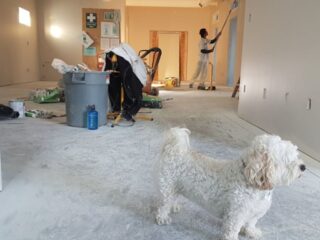Have you ever faced a slow drain or mysterious water backup and wondered if it’s just a minor hiccup or a sign of a bigger plumbing problem? Knowing the difference can save you time, money, and a lot of frustration. Let’s identify whether you’re dealing with a simple clog or something more serious.
Signs of a Simple Clog
Localised Slow Draining
If you notice that water is draining slowly in just one sink or shower, it’s likely a simple clog. This is usually caused by hair, soap scum, or food particles. These clogs are often easy to fix with basic tools like a plunger or a drain snake.
Gurgling Sounds in Specific Drains
Hearing gurgling noises from a single drain when water is running? This usually indicates a blockage in that specific pipe. The sound is caused by air bubbles trapped in the clog trying to escape.
Foul Odours from a Single Drain
If a bad smell is coming from just one drain, it’s typically due to trapped food or debris starting to decompose. This is a common issue in kitchen sinks and can often be resolved by cleaning the drain thoroughly.
Water Backup in One Fixture
When water backs up in only one fixture, like a sink or a toilet, it’s a sign of a localised clog. These blockages are often due to something stuck in the pipe right below the fixture.
Indicators of a Bigger Plumbing Problem
Multiple Slow Drains
When you have slow drains in multiple locations around the house, it’s a strong indication of a more significant issue, possibly a blockage in the main sewer line.

Check out this post to know if a drain is shared or not.
Frequent Clogs
If clogs keep coming back, even after you’ve cleared them, you might be dealing with a deeper problem within your plumbing system. This could be due to a build-up of grease, roots infiltrating the pipes, or other persistent issues.
Sewage Smell
A sewage odour is a serious red flag. This often indicates a blockage in the main sewer line, which can cause sewage to back up into your home. Addressing this issue immediately is important to avoid health hazards and extensive damage.
Water Stains and Damage
Water stains on ceilings, walls, or floors suggest a leak or blockage in your plumbing system. This could be due to pipes bursting or overflowing, which needs immediate attention.
Products to Avoid Using for Drain Cleaning
They say that you should clean your drains regularly. However, how can you do this in a way that’s safe for the drainage system? You have to be careful what products you’re putting down the drain, as there are many out there that are too strong and harsh.

Consequently, they can do more damage than good. So, let’s take a look at the products you shouldn’t be using for drain cleaning and why it’s better to invest in a professional cleaning service for this task.
Cheap Drain Cleaners
Don’t make the mistake of purchasing drain cleaners from your local store. Yes, they can be cheap and seem like the answer to your problems. However, many people will tell you that this is the biggest mistake they’ve ever made. In particular, they’ve damaged the pipes, which need to be repaired or replaced, which is a costly job. So, what’s the problem with cheap drain cleaners? They contain harsh chemicals that can be corrosive to pipes. They can heat up this material, which burns and weakens them. Over time, this is going to cause leaks and bigger problems. So, it’s best to avoid this option at all costs, no matter how cheap and tempting they can be.
Bleach
A very popular product to have in your home is bleach. Many homeowners use it to get rid of unpleasant odours and to kill bacteria. So, you might think that it’s a good choice for going down the drains to clean them. After all, it’s cheap to buy and strong. However, this is not the case. In fact, bleach can be a very damaging cleaner to use in the drainage system. In particular, it can heat up the pipes and damage them permanently. When this happens, you’re going to have costly repairs and replacements on your hands. So, if you’re tempted to try some of the bleach you have under the sink, make sure you put it down again. It can do more harm than good.
Conclusion
Recognising the difference between a simple clog and a more serious plumbing issue is crucial for maintaining a healthy plumbing system in your home. By paying attention to the signs and taking preventative measures, you can avoid costly repairs and ensure your pipes stay clear. If you’re ever in doubt, don’t hesitate to seek professional help.




